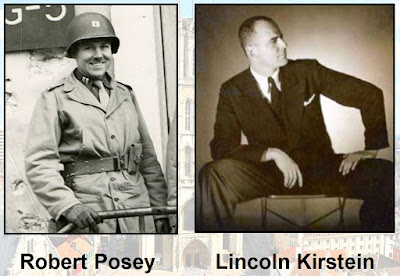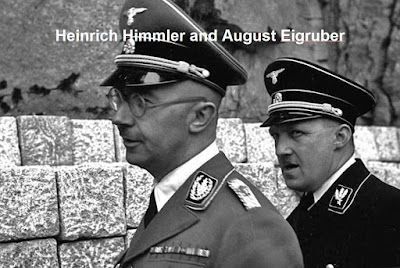July 17, 2021
Before we resume “The World’s Greatest Treasure Hunt,” as promised, here is the list of presidential Secret Service nicknames in their proper order. I knew Lancer and Lace were the Kennedys, Rawhide and Rainbow were the Reagans, and figured out Deacon (and Dancer) had to be the Carters, and Mogul (and Muse) were the Trumps. How did you do matching them up?
We return you now to our regularly scheduled feature.
THE WORLD’S GREATEST TREASURE HUNT
As the invasion of Europe began, General Dwight Eisenhower issued a statement, regarding the protection of art treasures: “Inevitably, in the path of our advance will be found historical monuments and cultural centers which symbolize to the world all that we are fighting to preserve. It is the responsibility of every commander to protect and respect these symbols whenever possible.”
Eisenhower added a caveat to his original statement: “If we have to choose between destroying a famous building and sacrificing our own men, then our men’s lives count infinitely more and the buildings must go.”
On June 23, 1943 the American Commission for the Protection and Salvage of Artistic and Historic Monuments in War Areas was established. This committee established the Monuments, Fine Arts, and Archives (MFAA) branch of the Allied army. Referred to as the Monuments Men, this division consisted of approximately 350 officers who had exceptional knowledge of art or archaeology.
When the Allies liberated Paris the MFAA found a wealth of documents relating stolen art.
Thanks to Rose Valland, a clerk at the Jeu de Paume Museum, who, unbeknownst to the Nazis, understood German and worked as a spy for the French Resistance during the occupation of Paris, had a trove of information, including copies of receipts, photographs, and inventories, to pass on to the Monuments Men.
In September 1944 Albrecht Gaiswinkler, a former Austrian Luftwaffe fighter, surrendered to American soldiers. Gaiswinkler revealed a piece of information that would be the key to rescuing The Ghent Altarpiece – a secret art depot at a salt mine in Alt Aussee.
German engineers created a state-of-the-art storage facility with a staff of 125. Engineers checked daily for temperature and humidity. Art restorers and art historians repaired objects that had been damaged in transit or in the process of having been looted.
After Supreme Allied Commander Dwight Eisenhower determined that Russia’s Red Army would reach Berlin long before the Allies could, the American military effort was redirected towards Austria under General George S. Patton.
In Patton’s Third Army were Monuments Men Robert Posey and Lincoln Kirstein.
On 29 March 1945 the Third Army was camped at Trier, Germany. Captain Posey had been nursing a pain in one of his wisdom teeth, which finally became too much to bear. The army dentists were stationed 100 miles away, so Kirstein walked into town to see if he could find a local dentist. He encountered a teenage boy who was eager to interact with an American soldier. Kirstein mimed a toothache, puffing up his cheek and wincing in pain. The boy led Kirstein through town and pointed to the office of a local dentist.
The dentist spoke some English, and as he went to work in Posey’s mouth, he asked what their role was in the U.S. Army. They explained that they were there to protect art and monuments. His son-in-law, the dentist explained, was a former major in the German army and had the same job.
The dentist directed them into the countryside, where he introduced them to his son-in-law, Hermann Bunjes, who was a scholar of French Gothic sculpture. He explained that he was a former SS officer, who had worked as an art advisor.
Bunjes described a number of Nazi art depots in castles, but the biggest cache of all, he said, was in Salzbergwerk, a salt mine in the Austrian Alps (click the link to see inside the mine). It contained thousands of objects stolen from across Europe, including The Adoration of the Mystic Lamb by Jan van Eyck.
But, he warned, the SS guards had been ordered to blow it all up, destroying history’s art treasures, if they failed to defend it against the Allies. The Nazis had shown themselves capable of such an atrocity, and far worse.
What no one knew was that August Eigruber, the Nazi official in charge of the region, had received a personal letter from Reichsminister Martin Bormann, instructing him to take all measures necessary to prevent the Alt Aussee treasure house from being captured by the Allies. Eigruber interpreted that as an order to destroy.
Posey and Kirstein told General Patton what they had learned from Hermann Bunjes, and the decision was made to cut across Austria – a route that would place them squarely in the path of Alt Aussee.
During the nights of April 10 and 13, 1945, SS soldiers drove into the mine with six heavy wooden crates. Stamped on the side of the crates were the words Vorsicht! Marmor: Nicht Sturzen – “Attention! Marble: Do Not Drop.” One crate was placed in each of the mine’s six main storage rooms. But the crates, the size of refrigerators, did not contain marble. They contained 500 kilogram aircraft bombs. If detonated, they totally destroying all of the art inside.
Next time, “Recovery!”
👉 Our close today continues our look at Psalm 119 from Praying with the Psalms, by Eugene H. Peterson.
“When I think of your ways, I turn my feet to your decrees ...” (Psalm 119:59).
When Christians think of God’s promises and remember God’s ways, their first impulse is to act them out. Feet and hands, not ears and tongues, are the organs of obedience. Dwight L. Moody used to say that every Bible should be bound in shoe leather.
Prayer: Father, I would not stand around today in idleness talking about your will, nor sit indolently reading about your will. You have very graciously put shoes on my feet so that I can go out and “proclaim the gospel of peace” – I am well able now, by your grace to walk in your will. In Jesus’ name. Amen.
-30-














No comments:
Post a Comment